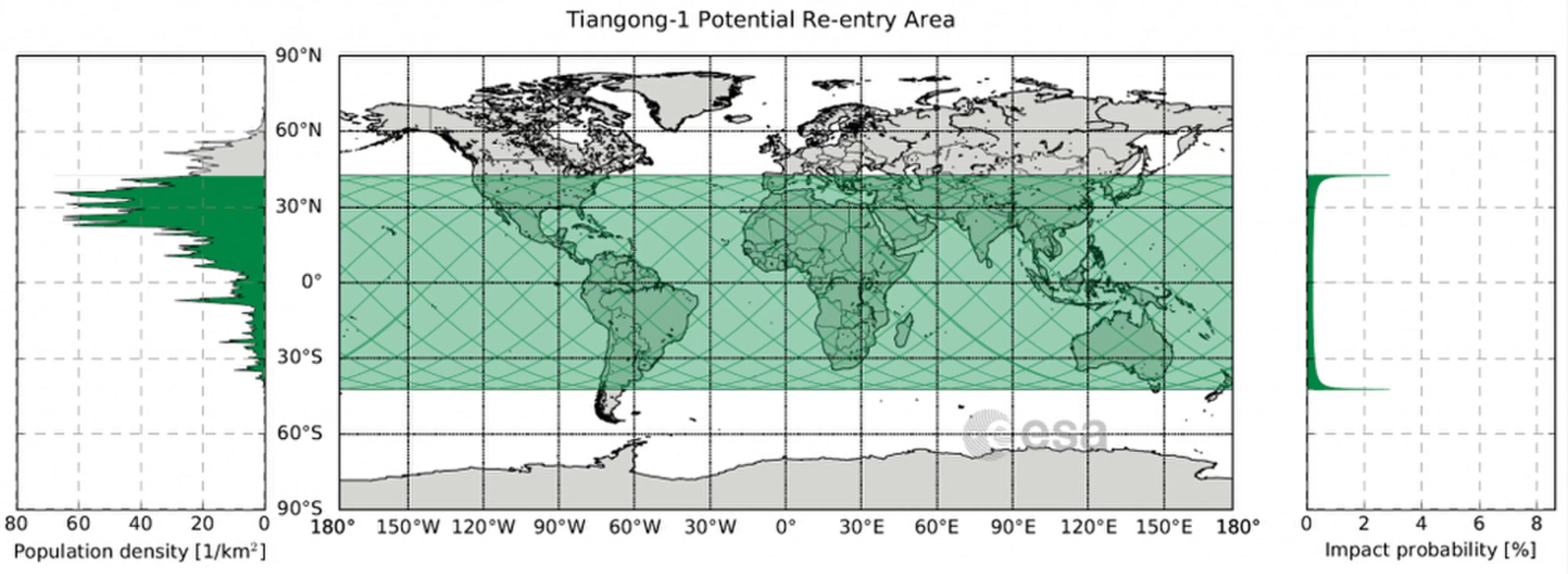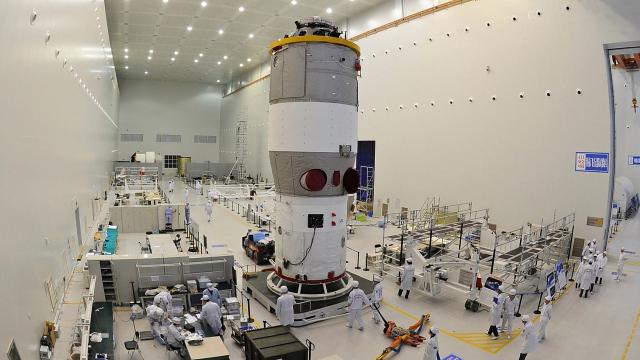Forecasts from the European Space Agency’s Space Debris Office and the US-based Aerospace Corp. predict that China’s falling space station, the Tiangong-1, will most likely plummet to Earth on Monday morning at around 10:30am AEST.
An undated photo of Chinese technicians working on Tiangong-1.Photo: AP
The craft was originally thought likely to crash as early as Saturday . Per Space.com, estimates of the doomed station’s final re-entry time still vary considerably, but ESA officials have now pushed back their prior assessment of Tiangong-1 after observed solar phenomena failed to speed up its rate of descent.
Here’s how they described their findings in a blog post:
A high-speed stream of particles from the Sun, which was expected to reach Earth and influence our planet’s geomagnetic field, did, in fact, not have any effect, and calmer space weather around Earth and its atmosphere is now expected in the coming days.
This means that the density of the upper atmosphere, through which Tiangong-1 is moving, did not increase as predicted (which would have dragged the spacecraft down sooner) and hence the ESA Space Debris Office has adjusted the predicted decay rate.
Though the Aerospace Corp. estimate tracks with the ESA’s, both groups set a wide window surrounding the 7:30pm ET target (around 10:30am AEST Monday) — with Aerospace Corp. predicting it could happen up to seven hours off the estimate in either direction, per Space.com.
The falling station has attracted no shortage of alarm, but the risk of it hitting a populated area, let alone any actual humans, remains infinitesimal. As fellow Gizmodo writer Ryan F. Mandelbaum noted on Thursday, Taigong-1 is relatively small by space debris standards at 8505kg, while craft as large as the 68,946kg Skylab have made uncontrolled descents into the Earth’s atmosphere with little problem and no reported fatalities.

The area where Tiangong-1 may crash down is highlighted in green.Graphic: European Space Agency (Space.com)
In fact, there are no confirmed deaths from human space debris — and given the Earth’s huge surface area, Aerospace Corp. estimates the odds of any individual being injured by space debris is somewhere around one in a trillion.
Per Space.com, Harvard University astrophysicist Jonathan McDowell predicts only 100-200kg of Tiangong-1 will make it back to the ground or seas, and the biggest risk from that remnant is likely that someone could discover the debris and contaminate themselves with hydrazine, an exceptionally toxic rocket fuel.
That means that the most likely effect for anyone near the crash site is actually a fantastic view. Per the Guardian, ESA Space Debris Office chief Holger Krag says that when Tiangong-1 dips below around 100km altitude, “Within minutes it will be fully decelerated and the energy it carries will be translated into heat and aerodynamic forces that rip it apart” in a fallout zone that could stretch over 966km.
“If you’re in the right place at the right time, and the sky is clear, it will be quite spectacular,” Krag added. “It will be visible to the naked eye, even in daylight, and look like a slow-moving shooting star that splits into a few more shooting stars. You might even see a smoke trail.”
